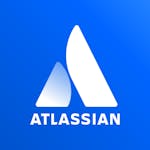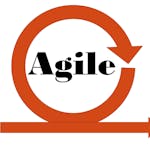Agile Terms: A to Z Glossary
Interested in Agile, but you keep seeing terms unfamiliar to you? This A-to-Z glossary defines key Agile terms you need to know.
Agile professionals contribute to collaborative and iterative software development. They play roles in project management, sprint planning and execution, cross-functional collaboration, Agile ceremonies, continuous improvement, stakeholder engagement, and utilizing Agile tools and practices. These responsibilities support the adaptive and collaborative nature of Agile development methodologies.
This Agile glossary can be helpful if you want to get familiar with basic terms and advance your understanding of Agile.
Agile Terms: A to Z Glossary
Interested in Agile, but you keep seeing terms unfamiliar to you? This A-to-Z glossary defines key Agile terms you need to know.
Agile professionals contribute to collaborative and iterative software development. They play roles in project management, sprint planning and execution, cross-functional collaboration, Agile ceremonies, continuous improvement, stakeholder engagement, and utilizing Agile tools and practices. These responsibilities support the adaptive and collaborative nature of Agile development methodologies.
This Agile glossary can be helpful if you want to get familiar with basic terms and advance your understanding of Agile.
Agile Terms
Agile
Agile is an iterative and collaborative approach to software development that emphasizes flexibility, adaptability, and customer collaboration. It promotes the delivery of working software in short iterations and values individuals and interactions over rigid processes and tools.
Backlog
The Backlog, also known as the Product Backlog, is a prioritized list of features, user stories, and tasks that must be implemented in a software project. It serves as the source of requirements for the development team and evolves based on feedback and changing priorities.
Continuous Integration
Continuous Integration is a software development practice where developers regularly merge code changes into a shared repository. It enables frequent automated builds and tests to catch integration issues early, promoting collaboration and reducing the risk of conflicts.
Daily Stand-up
The Daily Stand-up, or the Daily Scrum, is a short, time-boxed meeting held by Agile teams. It allows team members to synchronize their activities, share progress, and identify obstacles. The focus is on collaboration, transparency, and alignment towards project goals.
Empirical Process Control
Empirical Process Control is a core principle of Agile that emphasizes making decisions based on observation, experimentation, and feedback. It involves inspecting and adapting processes iteratively to achieve better outcomes rather than relying solely on pre-defined plans.
Feature
A Feature is a distinct and valuable functionality that delivers business value to the end-users or customers. It is typically represented as a user story or a set of user stories and is a building block of software development in Agile.
Kanban
Kanban is an Agile framework that visualizes work on a Kanban board, typically using columns to represent different workflow stages. It helps teams visualize and manage their work, limit work in progress, and achieve a smooth flow of tasks.
Iteration
An Iteration, also known as a Sprint, is a time-boxed period in Agile where a team works on a set of user stories or tasks. It is typically two to four weeks long and ends with a potentially shippable increment of working software.
Incremental Development
Incremental development is an approach in Agile where software is built and delivered in small, incremental steps. Each increment adds new features or functionality to the existing system, allowing for early feedback and continuous improvement.
Joint Application Development (JAD)
Joint Application Development (JAD) is a collaborative approach used in Agile for gathering requirements and defining project scope. It involves workshops or meetings where stakeholders and development team members collaborate to elicit requirements, clarify expectations, and align project goals.
Knowledge Sharing
Knowledge Sharing is a core value in Agile that emphasizes sharing information, expertise, and lessons learned within the team and the broader organization. It fosters collaboration, continuous learning, and collective ownership of the project's success.
Lean Software Development
Lean Software Development is an Agile methodology inspired by lean manufacturing principles. It delivers customer value by eliminating waste, optimizing flow, and continuously improving processes. Lean principles emphasize efficiency, simplicity, and the elimination of non-value-added activities.
Minimum Viable Product (MVP)
The Minimum Viable Product (MVP) is the smallest version that can be developed and delivered to customers while providing value. It allows teams to validate assumptions, gather feedback, and iterate based on real-world usage. The MVP approach helps reduce time to market and enables incremental development based on customer needs.
Product Owner
The Product Owner is a key role in Agile, responsible for representing the voice of the customer and ensuring the development team delivers value. They define and prioritize the product backlog, collaborate with stakeholders, make decisions, and clarify requirements. The Product Owner acts as a bridge between the development team and the customer or end-users.
Retrospective
The Retrospective is a dedicated meeting held at the end of an iteration or project in Agile. It allows the team to reflect on their work and identify strengths, weaknesses, and areas for improvement—the retrospective aims to foster a culture of continuous learning and adaptation within the team.
Scrum
Scrum is an Agile framework that provides a structured approach to software development. It emphasizes self-organizing cross-functional teams, time-boxed iterations (Sprints), and frequent inspection and adaptation. Scrum roles include the Product Owner, Scrum Master, and Development Team, working collaboratively to deliver value.
Quality Assurance (QA)
Quality Assurance (QA) in Agile refers to the activities and processes that ensure the software meets the desired quality standards. It involves testing, code reviews, continuous Integration, and other practices to identify and address defects early in development. QA is integrated into Agile teams to promote the delivery of high-quality software.
Release Planning
Release Planning determines the scope, timing, and content of product releases in Agile. It involves prioritizing features, estimating effort, and creating a roadmap for delivering value increments to customers. Release planning aligns the development team and stakeholders on the overall vision and goals of the project.
Scrum Master
The Scrum Master is a role in Agile responsible for facilitating the Scrum process and ensuring its effective implementation. They help the team understand and adopt Agile principles, remove obstacles, and promote collaboration and self-organization. The Scrum Master acts as a coach and servant leader for the team.
User Story
A User Story is a concise, customer-centric description of a desired feature or functionality. It follows a simple template: "As a [role], I want [goal] so that [benefit]." User stories capture the essence of customer needs and serve as a basis for Agile prioritization, planning, and implementation.
Velocity
Velocity is a metric used in Agile to measure the work a team can complete in an iteration. It represents the team's average number of user stories or story points per iteration. Velocity helps the team estimate the future capacity and plan iterations effectively.
Agile Velocity
Agile Velocity refers to the speed or rate at which an Agile team delivers business value. It measures the team's ability to complete user stories or provide increments of working software over time. Agile velocity is monitored and used for forecasting and continuous improvement.
XP (Extreme Programming)
Extreme Programming (XP) is an Agile methodology emphasizing close collaboration, fast feedback, and high-quality software development. It focuses on continuous Integration, test-driven development, pair programming, and frequent communication to maximize customer value and developer productivity.
eXtreme Manufacturing
eXtreme Manufacturing (XM) is an Agile approach that applies Agile principles to manufacturing and production processes. It aims to increase flexibility, reduce waste, and enhance efficiency in manufacturing operations. XM promotes iterative development, continuous improvement, and close collaboration among teams involved in product design, production planning, and supply chain management.
Yield
In Agile context, yield refers to the percentage of defect-free units or deliverables produced during development. It measures the effectiveness of the development process in producing high-quality output. By focusing on yield, Agile teams strive to minimize defects, rework, and waste, improving productivity and customer satisfaction.
Zero Defects
Zero Defects is an aspirational goal in Agile that emphasizes the importance of delivering high-quality software by preventing and eliminating defects. Agile methodologies promote early defect detection through continuous testing, automated testing, and peer reviews. Zero Defects drives a culture of excellence, continuous improvement, and customer-centricity.
Conclusion
Congratulations on completing the Agile Terms Glossary! You now have a solid understanding of the essential terms and concepts in Agile software development. This glossary has provided a comprehensive overview, from Agile methodologies and practices to key roles and principles. As you embark on your Agile journey, remember to apply these concepts in practice, embrace collaboration and flexibility, and continuously strive for improvement.
Learn in-demand Agile skills from industry leaders.
Agile Courses | Scrum Courses | Project Management Courses | Product Management Courses | Software Testing Courses | Software Development Courses | Business Analysis Courses | Kanban Courses
 Join a community of over 100 million learners from around the world
Join a community of over 100 million learners from around the world Learn from more than 200 leading universities and industry educators.
Learn from more than 200 leading universities and industry educators. 70% of all learners who have stated a career goal and completed a course report outcomes such as gaining confidence, improving work performance, or selecting a new career path.
70% of all learners who have stated a career goal and completed a course report outcomes such as gaining confidence, improving work performance, or selecting a new career path.- 100% online
- Flexible schedule
- Mobile learning
- Videos and readings from professors at world-renowned universities and industry leaders
- Practice quizzes
Can’t decide what is right for you?
Try the full learning experience for most courses free for 7 days.Register to learn with Coursera’s community of 87 million learners around the world





